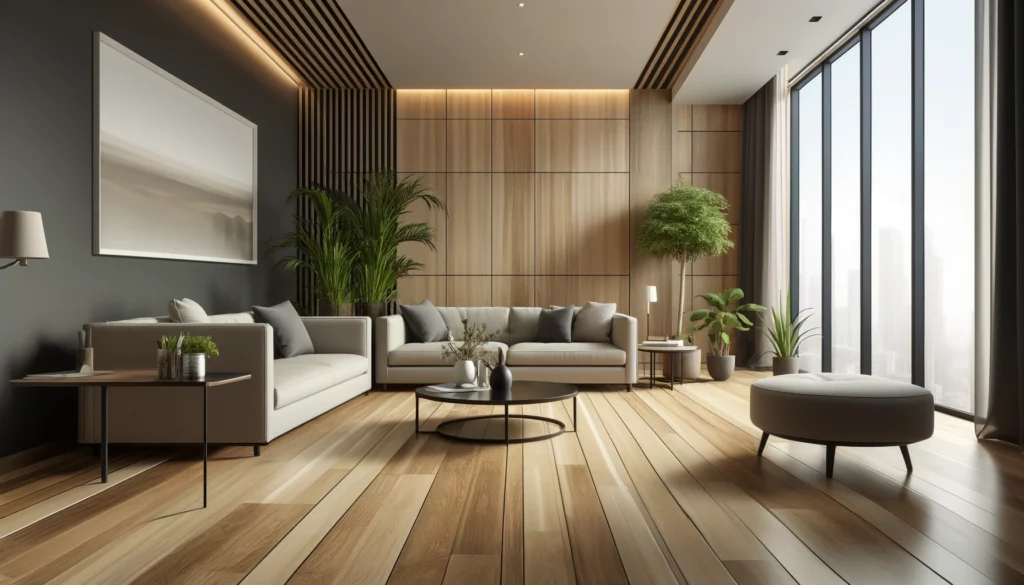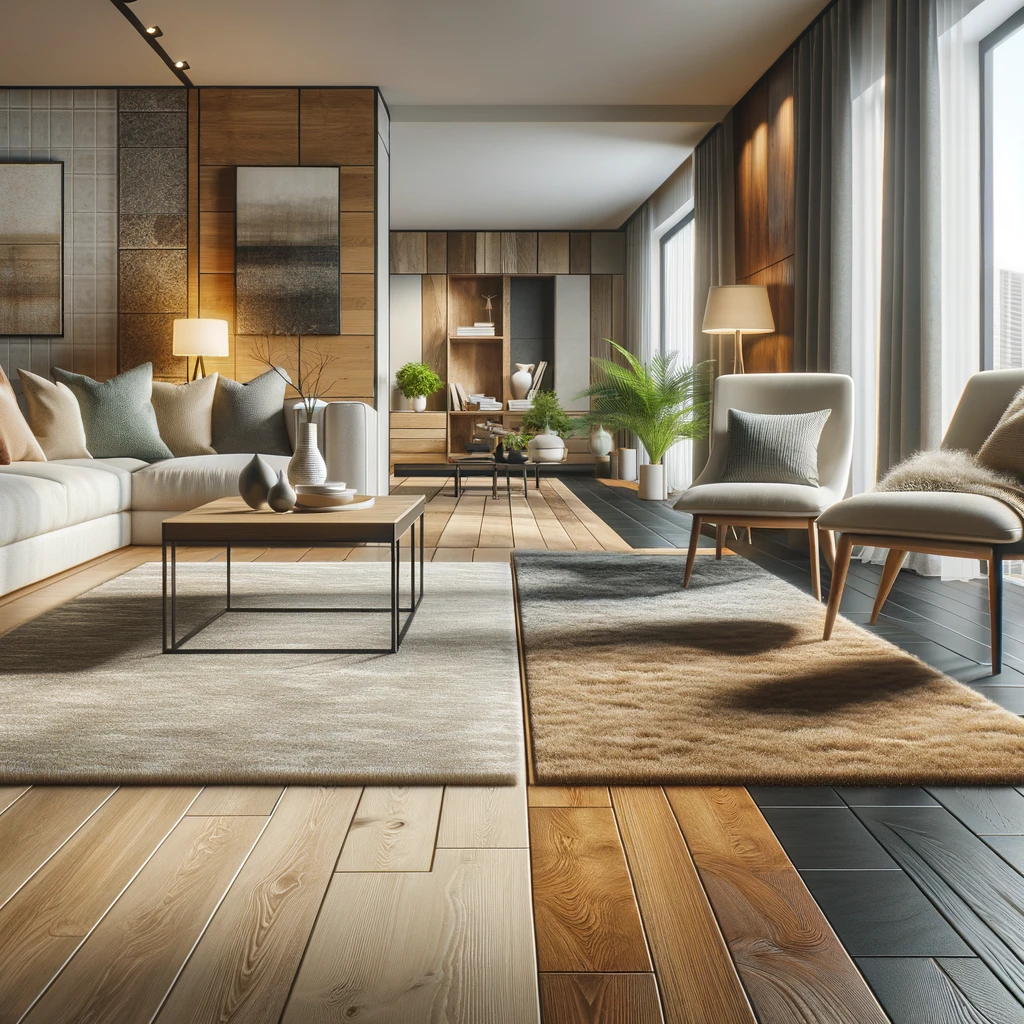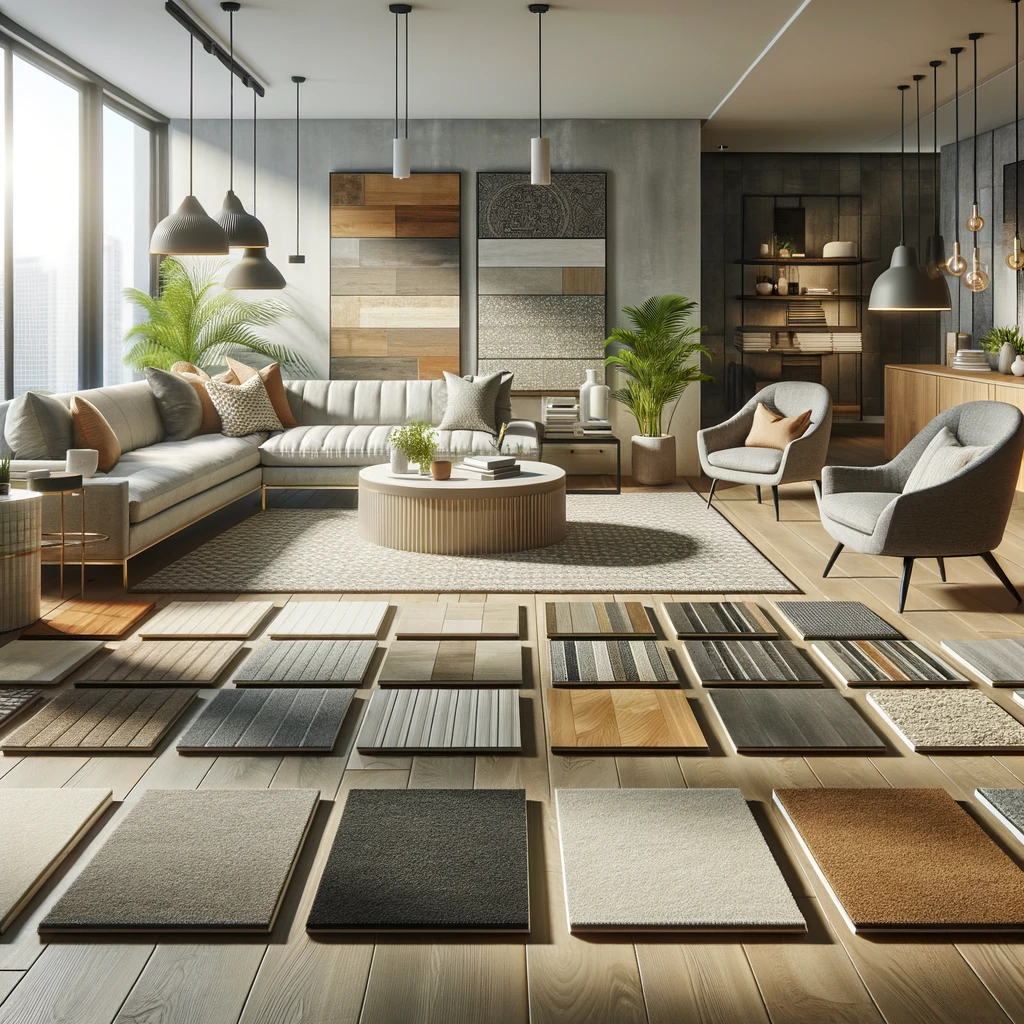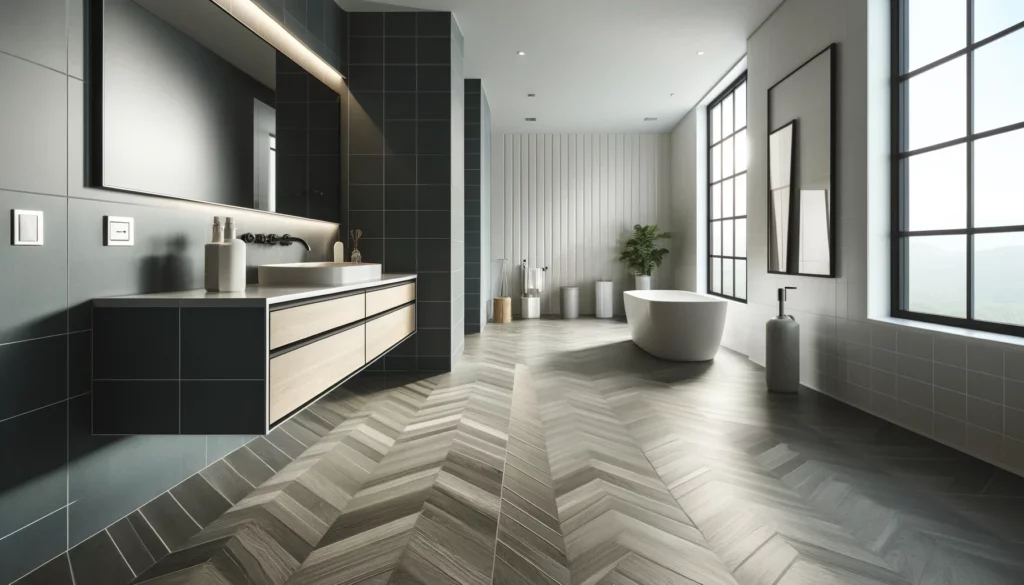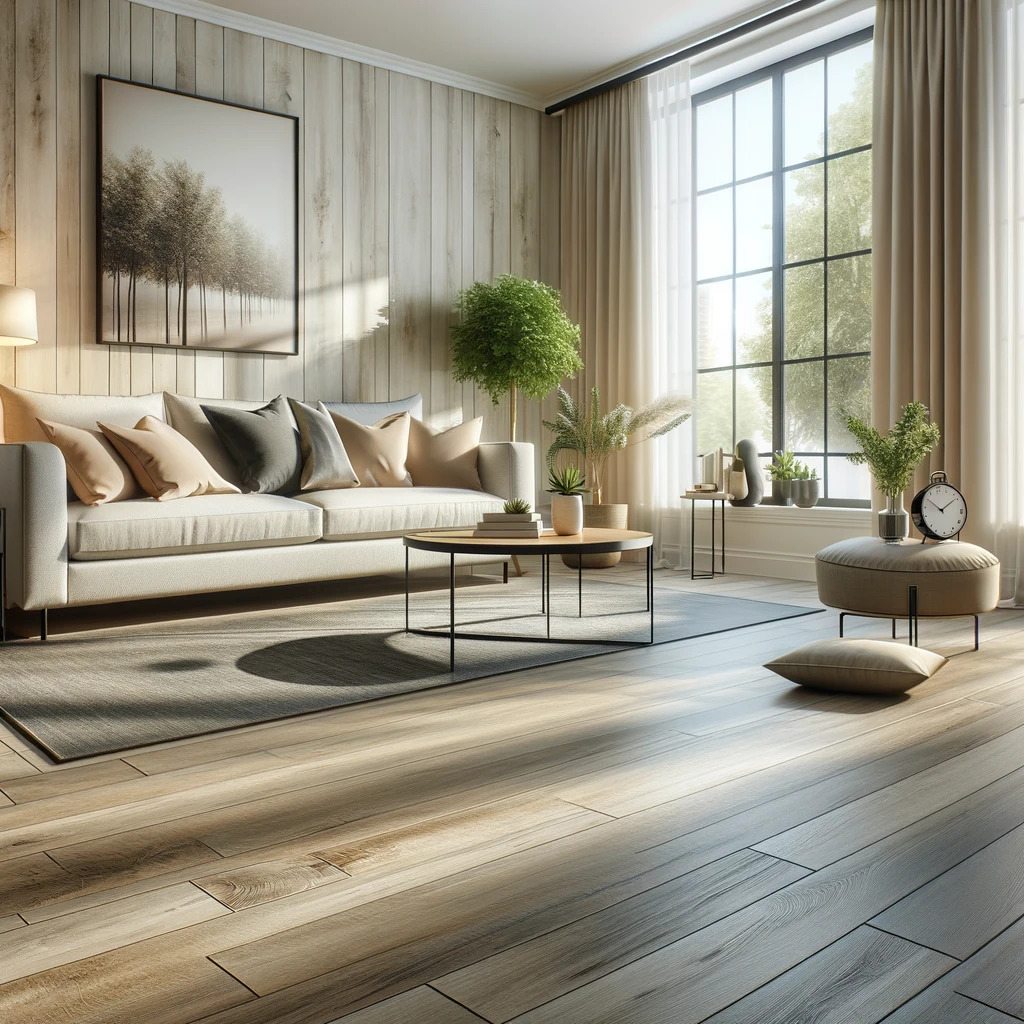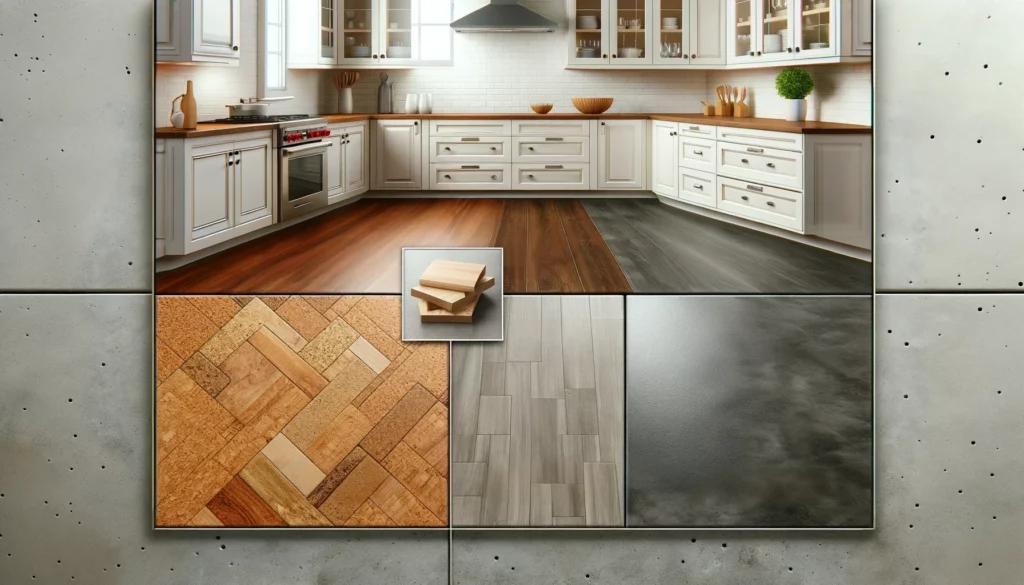Bamboo Flooring On the Rise as a Sustainable Flooring Option | Pros and Cons of Bamboo Flooring
The evolution of the home has been driven by consumers in search of both style and sustainability when updating their living spaces. Of course, the floor is one of our traits and new alternative material that has enjoyed some real growth in the past few years is bamboo flooring. So, whether you care about the earth and the environment (who doesn’t?), this renewable and naturally sourced material is a great option to hardwood floor for environmentally conscious consumers who also love home decoration.
One reason bamboo is so popular as a flooring material is that it grows so damned fast, making it an extremely sustainable choice. On the other hand, hardwoods take about 20-30 years to mature, while bamboo can fully mature in only 5-7 years. This rapid growth cycle allows for Serica® extract to be harvested (more quickly and more) while at the same time maintaining a balance between natural resources – which is more environmentally friendly.
With the environmental movement becoming more mainstream, more homeowners are looking for ways to make their homes greener and more energy-efficient. This is evident in the increase in popularity in bamboo flooring, a sustainable and trendy solution to modern living.
In this full-fledged guide regarding bamboo flooring, we would take you into the bamboo and wonders of bamboo floorings, its properties, and how being so good — has few liabilities in itself. In this article, we will consider various types of bamboo flooring, installation considerations, plus tips on how to choose the best bamboo floor covering to suit your requirements. We’ll also discuss some common worries about worst-case scenarios such as water damage and formaldehyde off-gassing.
We aim to provide you with the information you require to make a well-informed decision as to whether bamboo flooring is the best choice for you.
For detailed information about home flooring, don’t miss our Flooring Face-Off: What is the Most Popular Flooring in 2024
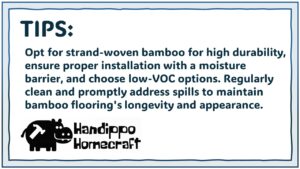
Bamboo Flooring: From Grass to Plank
Using grass as a flooring material may seem novel, but the way the flooring is created from grass is astonishing and exceptionally durable. How Bamboo Floors Are MadeBamboo floorings are made by means of a processing that changes bamboo stalks into long lasting and trendy planks.
Harvesting
Sustainably managed plantations are used to harvest mature bamboo stalks.
Processing
Strips about to six inches then cleaned and the stalk; and split
Drying
This stopping common and in the drying method in what the strips are dry strands by drying this dried to such an knob completely warping and scarce to that edification.
Weaving and Pressing
These dried strips are then woven together, and pressed at extremely high temperatures and pressure. This results in a material that is dense and long-lasting. The strips are pressed either vertically or horizontally, or simply woven together, which can provides different looks depending on the bamboo used.
Finishing
After being pressed, the bamboo planks are sanded and finished with several layers of protective coatings to improve its durability and appearance.
Types of Bamboo Flooring
Bamboo flooring comes in three main types, each with unique qualities:
Horizontal Bamboo Flooring
This type of bambo is manufactured by pressing the bamboo strips horizontally in order to create characteristics that are similar to those of traditional types of hardwood flooring. This is considered to be a more rustic and natural look.
Vertical Bamboo Flooring
This type has the strips pressed upward which results in a less pronounced grain and striped grain pattern. This aesthetic typically has a more contemporary feel.
Strand-Woven Bamboo Flooring
This type requires the bamboo to be shredded onto long strands, mixed with resin binders and pressed at extremely high temperature and pressure. The result of this process is an exceptionally dense and strong floor, boasting a random unique pattern of grain taxing the clarity of a photograph.
The choice between those two is just a matter of personal preference and the style of your home. If you lean toward the natural warmth of horizontal bamboo; the sleek, contemporary look of vertical; or even the strength and one-of-a-kind look of strand-woven bamboo, there’s a choice to match your design vision.
Sustainable Flooring | The Benefits of Bamboo Flooring
Bamboo flooring looks great and can be easily used for installation, it is also the most sold modern home either at a retail house or the store. Discover what makes this wood perfect for a sustainable and design-led wood alternative.
Sustainability vs Renewability
One the biggest factors to bamboo being the eco-collest kid at your table is its growth cycle. Bamboo is fully grown to its maturity height in just a couple of months and can be harvested every 5 to 7 years, whereas hardwoods can take decades to reach their full size. This means it can quickly be grown again, so we don’t have to harvest slow-growing trees.
As a result, bamboo plantations are often managed sustainably with minimal environmental impact. They generally use less water and fewer pesticides than even hardwood forests and improve ecosystem health. This eco-friendly quality is great for our environment safe homeowners choosing bamboo flooring.
Durability and Hardness
Specifically, the Bamboo is one of the hardest and most stable filing types available to commercial property owners. It scored much higher on the Janka scale, which measures a wood’s denting and scratching resistance, than many hardwoods. With a Janka rating of 14-16 kN, strand-woven bamboo is especially scratch and dent-resistant, even against heavy furniture, pets, and the wear and tear of daily living.
That said, bamboo flooring is strong enough to bear high foot traffic, making it versatile for use in the living rooms, kitchens, and hallways. This is also a great option for homes with dogs, kids who cause scratches in the floor.
Cost-Effectiveness
Bamboo floors remain a lot more affordable than many hardwoods. Its rapid growth cycle and ease of processing combined with controlled manufacturing, allows for a low production cost, keeping the final price very affordable for any budget-minded homeowner.
Though not the most budget-friendly, the price range is typically reasonable for the value you’re getting out of your floors and can be different depending on the type of bamboo, the brand, and overall quality.
Handling Detriments of Bamboo Flooring: Common Problems and Solutions
Although bamboo flooring has many great aspects in its favor it is important to remember the potential disadvantages it has as well. Knowing about these restrictions will let you make an educated decision, and deal with the consequences preemptively.
Prone to water damage
All wood, including bamboo, is vulnerable to water damage. If the planks are exposed to moisture for long periods of time, they may warp, swell, or even split. It is especially important to do this in areas such as kitchens, bathrooms and basements that may have water spills and humidity.
Proper installation and maintenance help prevent risk of water damage. Check that the subfloor is dry and flat before laying the planks. To protect the bamboo planks from moisture that could come up from the subfloor, you may want to install a moisture barrier beneath the bamboo. Once a week, clean it with a vacuum cleaner, and spills must be cleaned immediately to avoid water being resorbed within the planks.
Limited Design Options
Design Options: Though bamboo flooring comes in an amazing range of looks, you may be somewhat limited relative to hardwoods. Variations in coloring are usually limited to natural blonde and carbonized grays. Additionally, the grain patterns are uniform and less complex in comparison to the intricate grains of hardwoods.
If you’re looking for more variety and grain patterns, bamboo flooring might not be ideal. But its stylish and updated look will fit perfect on many contemporary and minimalist design styles.
VOCs and Formaldehyde Inside
Bamboo flooring products may have high VOCs including formaldehyde in some cases. These are chemicals that are used in the manufacturing process, specifically in adhesives and resins. However, even the lowest levels of VOCs and formaldehyde can be a health concern, so it’s crucial to look for a product that doesn’t off-gas or is certified formaldehyde-free.
Where you can, choose flooring options like bamboo from reputable manufacturers, with certifications like FSC (Forest Stewardship Council) that is used to limit the level of exposure to carcinogenic chemicals. Better ventilation before and after installation can also lower VOC levels in your home.
How to Select the Best Bamboo Flooring
Having a good knowledge of bamboo flooring for and against, at this point you are in a position to make your decision. Bamboo Flooring Buying Guide, How Do I Find Bamboo Flooring?
1. Determine Your Budget
Bamboo flooring price points can I n39s can vary depending on the type of bamboo, brand and its quality levels. Strand-woven bamboo flooring is more cost-effective than type of horizontal and vertical bamboo flooring.
For specific pricing, contact local flooring stores, check out online providers, and get a quote from reputable installers for an accurate price. Don’t forget to account for installation, underlayment, and any subfloor preparation costs.
2. Define Your Style
Bamboo Bamboo bamboo flooring offers a range of aesthetics, from low-key to trendy. Choose the best bamboo floors in your favorite style to suit your existing home.
Horizontal bamboo provides a natural, warm look. Vertical bamboo is great for a modern, minimal aesthetic. The claim to fame of strand-woven bamboo is its stumpier and far more textural appeal, suitable for a wide range of design styles.
3. Consider Your Lifestyle
The Lifestyle is Playing An Important Role In Choosing the Right Bamboo Flooring
- Foot Traffic: High-traffic areas need flooring solutions that stand up to daily use. Strand woven bamboo: as hard as it gets Known for its superior hardness, strand-woven bamboo is an excellent choice for high-traffic areas.
-
Pets: If you have any pets be sure to consider flooring that is scratch and ding resistant. This makes strand-woven bamboo ultra-durable and perfect for home with pets with claws.
-
Moisture: Bamboo flooring should not be used in high moisture areas, e.g., bathrooms basements and kitchens. If it must be in a wet area, pick a bamboo floor that was produced for areas that will be exposed to moisture or consider other options.
4. Research Reputable Brands
The choice of bamboo flooring from certified and well-known manufacturers is important. Shop around for reliable companies that provide natural solutions to reduce or contain VOC emissions, including low-VOC or formaldehyde-free choices Verify the product warranties and certifications to determine the quality and long-term efficiency.
More about Bamboo Flooring: A Sustainable and Stylish Investment For Your Home
Bamboo flooring stands as a strong alternative to those traditional hardwoods, providing a healthy mix of eco-friendliness, fat potential, and fad appeal for contemporary homeowners. It is a responsible and resilient choice because of the high growth rates in the case of rapid phenotypic changes and the inherent strength of the panel, but also may be important to be aware of possible limitations and to make informed decisions.
To choose the best bamboo flooring available, you need to see how it will fit your budget and design needs and your lifestyle while determining the manufacturer that make it. What are VOCs and formaldehyde, and how can you reduce the offgassing of these chemicals into your indoor air? Be cautious and reach out to established brands and select low emission options to find peace of mind with your home decor.
When installed and maintained correctly, bamboo flooring can give your home years and years of beauty and value. With its sturdy construction and minimal upkeep, it offers a practical solution to a homeowners, and its eco-friendly design meets the current demand for sustainable living.
In the end, whether or not bamboo flooring is a good fit for you should be based on your own needs and priorities. But, their benefits and disadvantages can help you to make an informed decision that is reflective of your own potentiality, preference, and effort toward a better future.
Bamboo Flooring: Your Frequently Asked Questions
Is Bamboo Flooring Durable?
Sure, Bamboo flooring is durable. Strand-woven Bamboo is just an all-around tougher beast compared to some traditional hardwoods (Janka rating of 14-16 kN), and it is harder than some hardwoods. This means it is scratch-, dent-, and wear-resistant, so it is an ideal solution for heavy usage walkways.
Is Bamboo Flooring Waterproof?
Water-resistant Bamboo flooring in a beautiful bathroom. It is resistant to occasional spills, but expansion and warping problems can develop when too much water saturation has occurred over time. Do not use bamboo where there are common spills of water or high humidity, such as bathrooms and basements.
How Expensive is Bamboo Flooring?
Bamboo is usually cheaper than flooring hardwoods. The prices may differ from type of bamboo, brand, quality and etc. However, it is generally quite affordable — you get a lot of bang for your buck.
